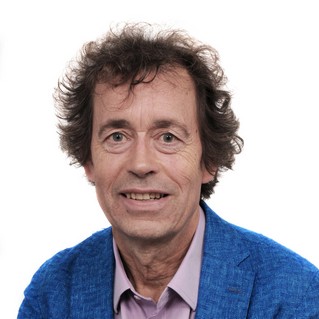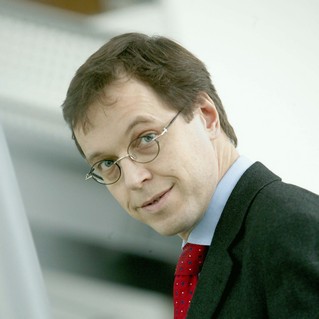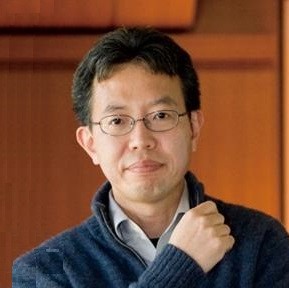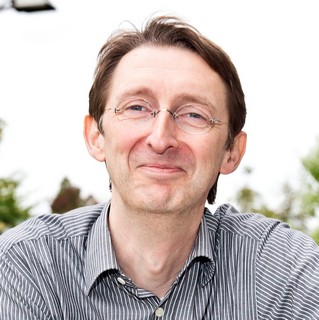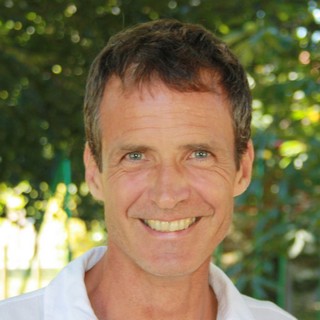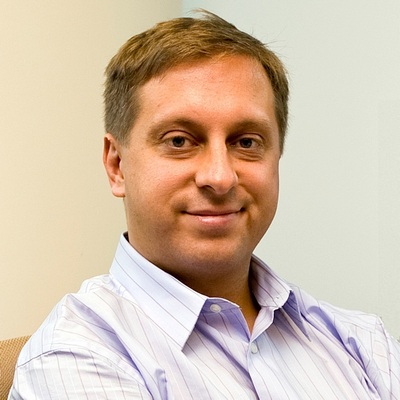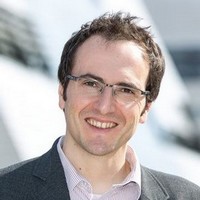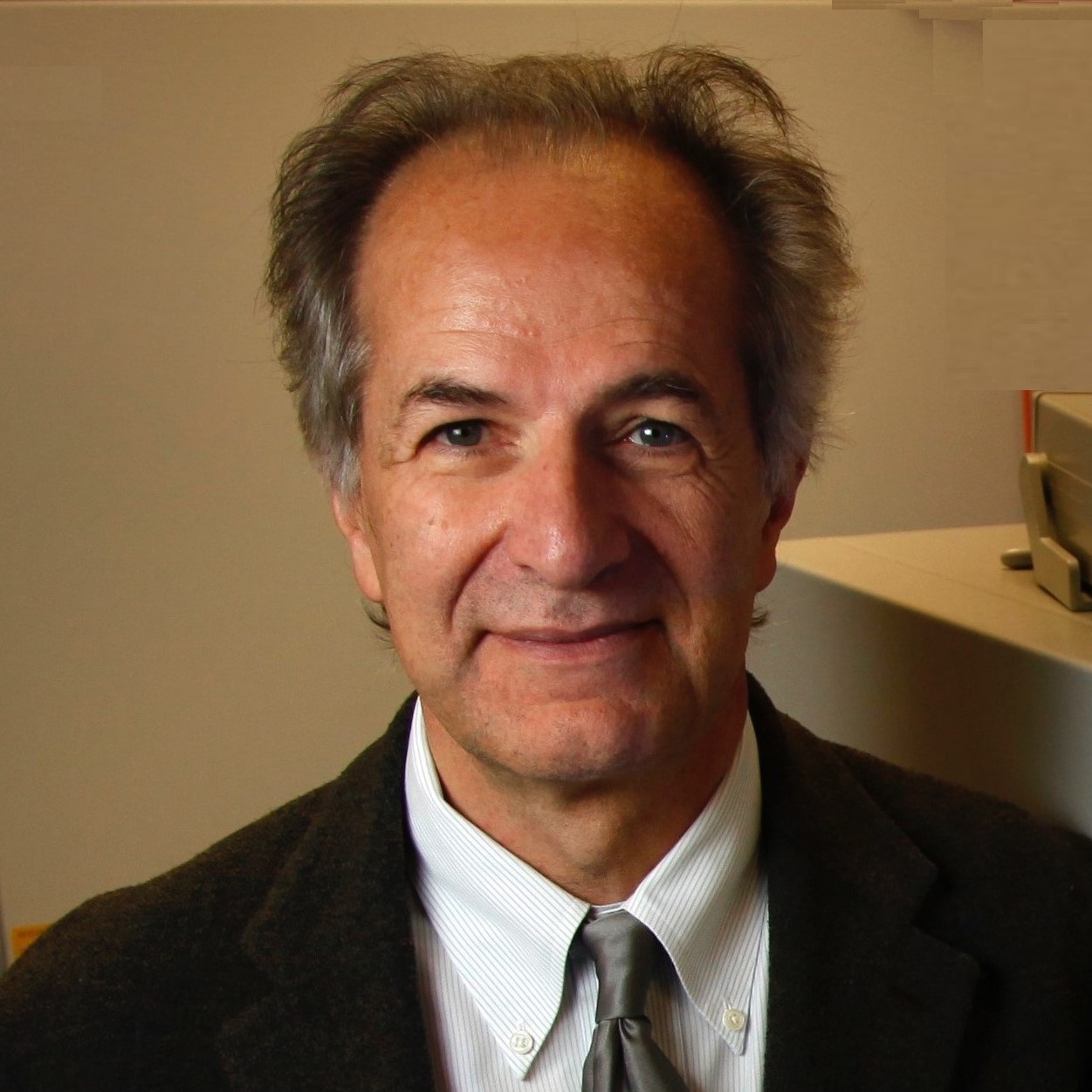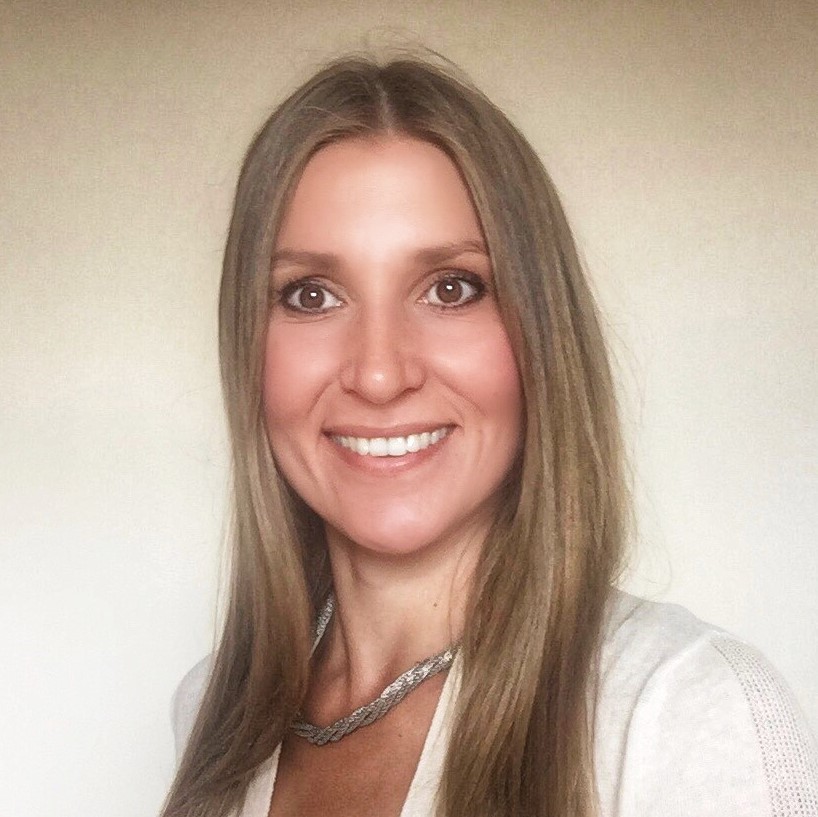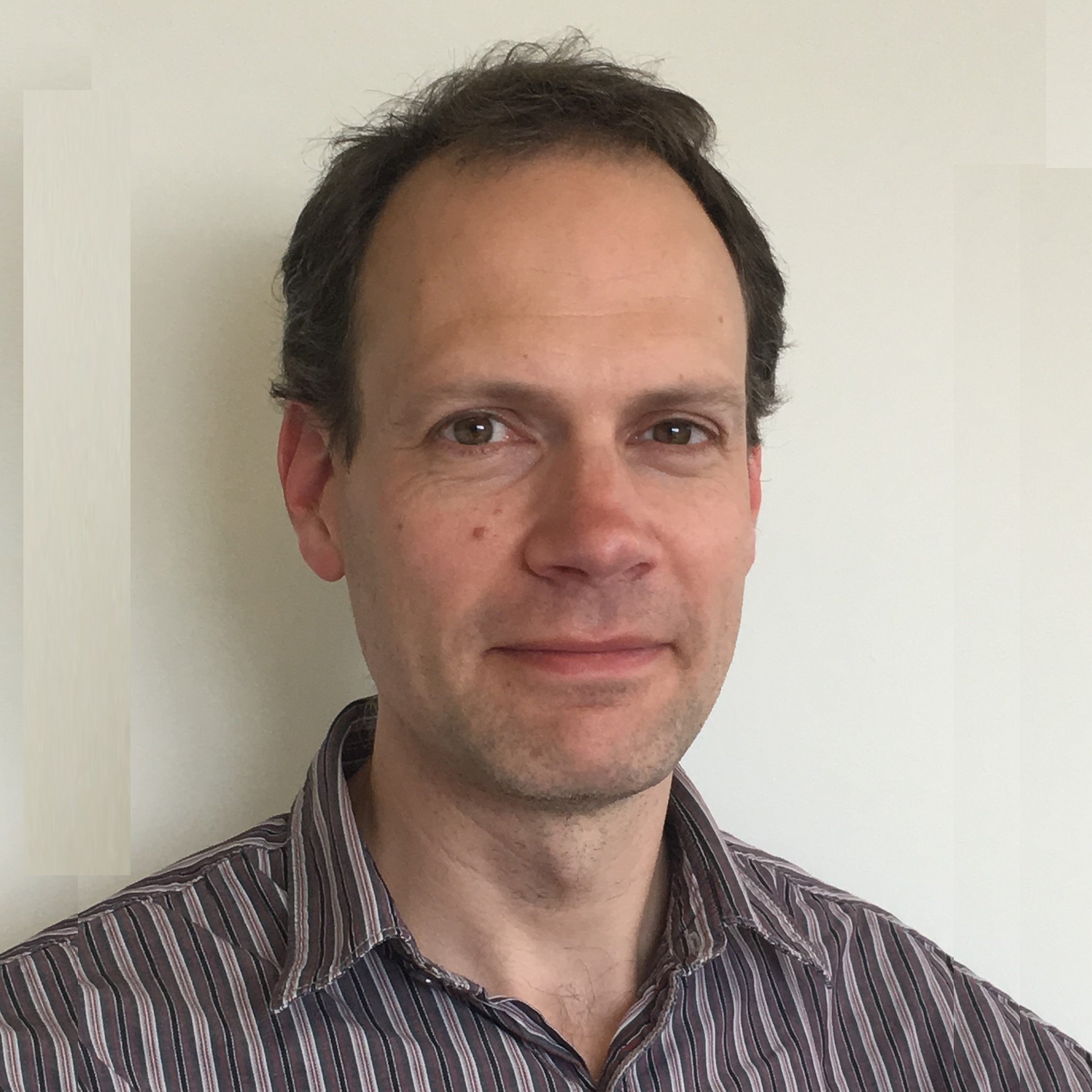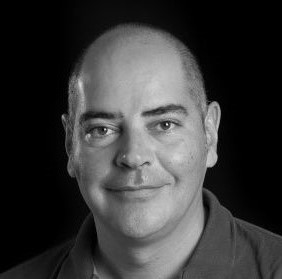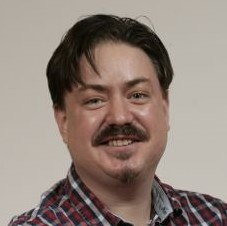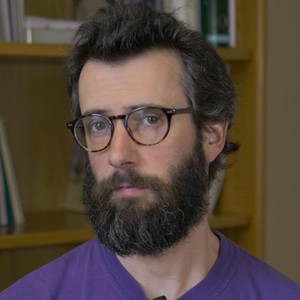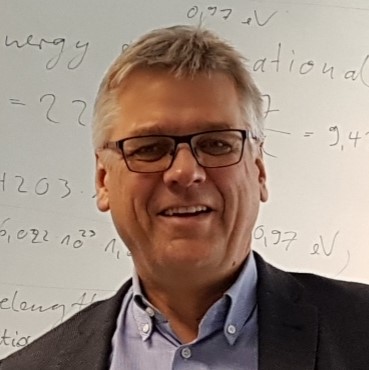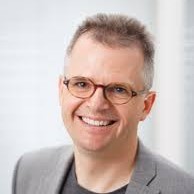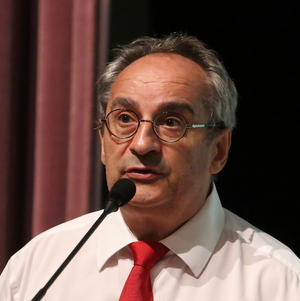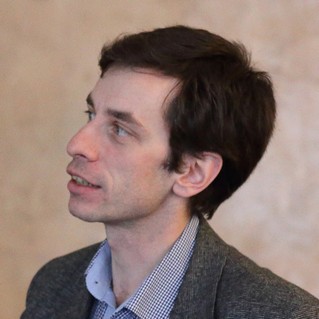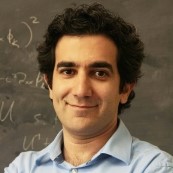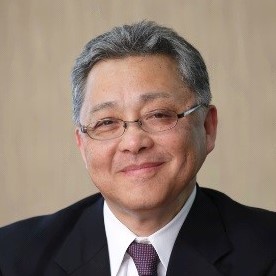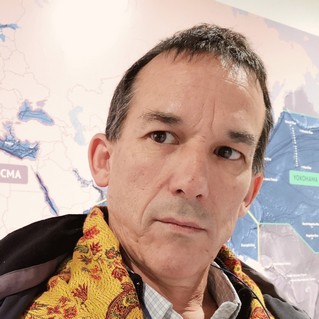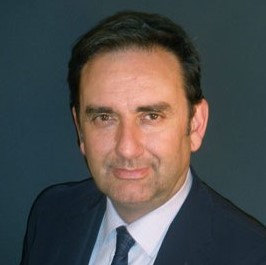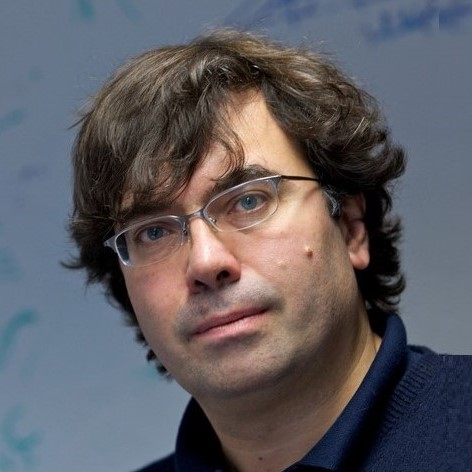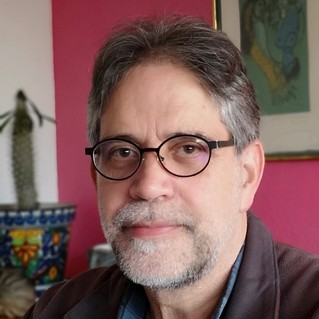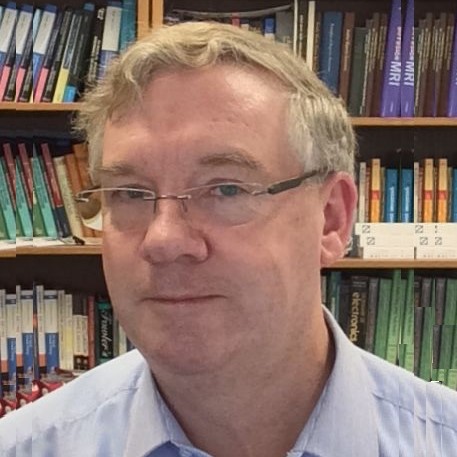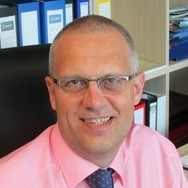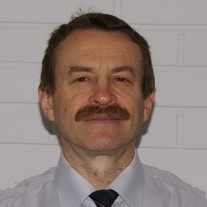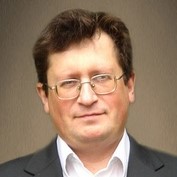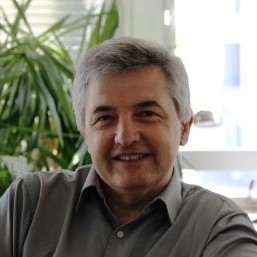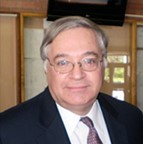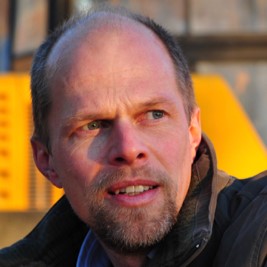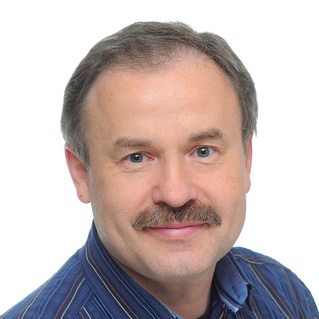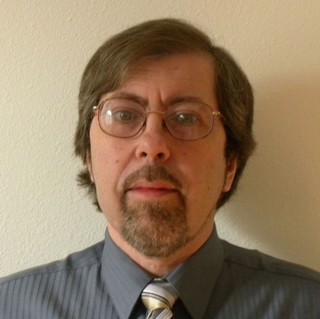General Plenary session speakers
Broad Theme Plenary session speakers
Keynote speakers
Invited speakers
regularly updated
| Speaker | Talk |
Ilya Akimov TU Dortmund Germany | Magneto-optical intensity effects in hybrid plasmonic structures |
Francisco Javier Alfaro Mozaz CIC Nanogune Spain | mid-IR nanophotonics with hyperbolic phonon polaritons: from antennas to photonic crystals |
Monica Alonso Cotta University of Campinas Brazil | Exploring fabrication methods to highly sensitive and selective InP nanowire biosensors |
Steven Anlage University of Maryland United States | Topologically Protected Photonic Modes in Composite Quantum Hall/Quantum Spin Hall Waveguides |
Carlos Anton-Solanas Center of Nanoscience and Nanotechnology - CNRS France | Generation of non-classical light in a photon-number superposition |
Alexey Aspidov Siemens Healthcare LLC Russian Federation | Translating MRI research power into clinical care |
Georgy Astakhov Helmholtz-Zentrum Dresden-Rossendorf Germany | Coherent control of spin qudit modes in SiC at room temperature |
Nikolai Avdievich Max Planck Institute for Biological Cybernetics Germany | Combined Surface Loop / Dipole-like Elements Enhance Central SNR of a Human Head Phased Array at 9.4T: Experimental Validation of UISNR Theory. |
Viktoriia Babicheva University of Arizona United States | Multipole resonances in van der Waals material antennas |
Juan Domingo Baena Doello Department of Physics Colombia | Applications of Huygens’ Sources in Microwave Metamaterials and Metasurfaces |
Denis Bandurin MIT United States | Graphene: a unique platform for mid- and far-infrared plasmonics |
Pavel Baranov Ioffe Institute Russian Federation | High-temperature optical and microwave induced spin manipulations on point defects in silicon carbide for sensing and quantum information processing |
somnath bhattacharyya Nano-Scale Transport Physics Laboratory (NSTPL) South Africa | Bottom-up nano-integration route for modified carbon nanotube spintronic device fabrication |
NICOLAS BONOD CNRS France | Modal analysis of anapoles |
Adel Bousseksou Centre for Nanoscience and Nanotechnology - C2N (CNRS/Paris-Sud University-Paris-Saclay University) France | Tunable Mid-Infrared Metasurfaces on III-V semiconductors |
Olga Boyko Institut des Nanosciences de Paris France | Experimental investigations of Elastic Waves in Nano Materials and Structures |
Alistair Brash The University of Sheffield United Kingdom | Light Scattering by a Single Solid-State Emitter: Beyond the Atomic Picture |
Marco Cassani Center for Translational Medicine (CTM) International Clinical Research Center (FNUSA-ICRC) St. Anne's University Hospital Czech Republic | Understanding nanoparticles-cells' interactions through mechanobiology |
Ilya Charaev Massachusetts Institute of Technology United States | Superconducting Nanowire Architectures: Technology and Applications |
Matt Clark University of Nottingham United Kingdom | Imaging of living cells with sub-optical wavelength phonons |
Miguel A. Correa-Duarte University of Vigo Spain | Designed Au-TiO2 Nanoreactors for Spatiotemporal Controlled, NIR-Promoted Photocatalytic Transformations inside Living Cells |
Hilmi Volkan Demir Nanyang Technological University (NTU) / Bilkent University Singapore / Turkey | Nanocrystal Perovskite LEDs |
Catherine Dendrinou-Samara Aristotle University of Thessaloniki Greece | Magnetic nanoparticles as vehicles for Multidisciplinary Medicine |
Ilya Derebezov Rzhanov Institute of Semiconductor Physics Russian Federation | Quantum light sources based on deterministic microlens structures (111) In(Ga)As and AlInAs QD |
Sergey Dickmann Institute of Solid State Physics of Russian Academy of Science Russian Federation | Light-absorption amplification by long-living spin excitations in a quantum Hall system |
Maria G. Donato CNR-IPCF Italy | Optical manipulation of non-spherical particles: trapping and binding of Si nanowires in counter-propagating beams |
Leonid Doskolovich Image Processing Systems Institute of RAS — Branch of the FSRC “Crystallography and Photonics” RAS Russian Federation | Coupled-wave models describing bound states in the continuum in resonant gratings and photonic rib waveguides |
Aliaksei Dubavik ITMO University Russian Federation | Nanocrystals in Bioapplications: The Importance of Being Functionalised |
Kofi Edee Institut Pascal France | Metasurfaces homogenization technique based on the computation of the average value of the contravariant tensors elements |
Stefan ENOCH Aix Marseille University France | Dipole-dipole interactions: Förster resonance energy transfer equivalence in the microwave domain. |
Andrey Evlyukhin Leibniz University Hannover Germany | Exact and approximate approach to multipolar decompositions in optics of nanostructures |
Vassili Fedotov University of Southampton United Kingdom | Sensing spatial coherence of light with planar metamaterials |
Vassili Fedotov University of Southampton United Kingdom | Radiation (-less) sources beyond common multipoles |
Soraia Fernandes International Clinical Research Center (ICRC) St. Anne´s University Hospital Portugal | Inhibition of prostate cancer propagation by modulation of mechano-activated pathways |
Ivan Fernandez-Corbaton Karlsruhe Institute of Technology Germany | Designing structures for the enhanced sensing of chiral molecules |
andrea fratalocchi KAUST University Saudi Arabia | Optical neurocomputing with anapoles |
Alberto G. Curto TU/e – Eindhoven University of Technology Netherlands | Chiral nanophotonics with 2D semiconductors |
Nikolai Gaponik TU Dresden Germany | Tuning of luminescence color and stability of CsPbX3 perovskite nanocrystals by encapsulation methods |
Alexey Generalov Topcon Positioning Systems Russian Federation | Semi-transparent lossy surfaces for cutoff of the fields in microwave shadow domain |
Pavel Ginzburg Tel Aviv University Israel | Radars and time-varying materials |
Pavel Ginzburg Tel Aviv University Israel | Optical manipulation for targeted drug delivery |
Gregory Goltsman Moscow State Pedagogical University Russian Federation | Superconducting Nanowire Single-Photon Detector as a Key Element for Quantum Photonic Integrated Circuits |
Jordi Gomis ICFO - The Institute of Photonic Sciences Spain | Transforming like-line Bound States in Continuum topoints by breaking anisotropy symmetry |
Dmitry Gorin Skolkovo Institute of Science and Technology Russian Federation | Novel multifunctional nanostructured carriers for diagnostic and therapy |
Maxim Gorkunov Shubnikov Institute of Crystallography Russian Federation | Directing light with liquid crystal metasurfaces |
Sergey Grigoriev Petersburg Nuclear Physics Institute NRC "Kurchatov Institute" Russian Federation | Classification of the fractal and non-fractal objects in two – dimensional space |
Brahim Guizal University of Montpellier France | Coupling between nano-slits lattice modes and metal-insulator-graphene cavity modes: a semi-analytical model |
Son Tung Ha Institute of Material Research and Engineering (A*STAR) Singapore | Supercavity modes in dielectric nanoantennas for directional lasing |
Tobias Heindel Technische Universität Berlin Germany | Towards Quantum Communication Networks Exploiting Solid-State Quantum-Light Sources |
Gary Hix University of Wolverhampton United Kingdom | Luminescent MOFs and Metal Phosphonate Materials |
Suklyun Hong Sejong University Republic of Korea | Theoretical Study of 2D Materials and Their Heterostructures |
Xiao Hu International Center for Materials Nanoarchitectonics Japan | Topological Photonic States in Artificial Graphenes |
Alexander Huck Technical University of Denmark Denmark | Coupling Germanium Vacancy Centers to a Fiber based Micro-Cavity |
Branka Jokanovic University of Belgrade Serbia | Printed frequency scanning antennas based on metamaterials |
Mohamed.S Kamara Victory Teens Organization Sierra Leone | None |
Vasily Kantsler Dept. Physics United Kingdom | Geometric control of bacterial surface accumulation |
Eli Kapon Laboratory of Physics of Nanostrcutures Switzerland | Integrated Quantum Photonics: Exploiting quantum and photonic confinements with tailored photonic crystals and site-controlled quantum dots |
Irina Khromova Metaboards United Kingdom | Wireless charging: challenges and aspirations |
Oleg Kibis Novosibirsk State Technical University Russian Federation | Electron-photonic topological states on the surface of a bulk semiconductor |
Sebastian Klembt University of Würzburg Germany | Exciton-Polariton Topological Insulator |
Vasily Klimov Lebedev Physical Institute Russian Federation | Lumped energy absorbers and sinks in optics and electronics of metamaterials |
Vasily Klimov Lebedev Physical Institute Russian Federation | High-Quality Resonances in Nanoparticles of Different Shapes and Materials: Analytical Material-Independent Approach |
Dmitry Krizhanovskiy The University of Sheffield United Kingdom | Nonlinear exciton- and trion-polaritons in a monolayer semiconductor |
Wieslaw Krolikowski Texas A&M University at Qatar / Australian National University Qatar / Australia | Photophoretic trapping and manipulation of particles |
Alexander Kubanek University Ulm Germany | Spin-photon interface of SiV- center in nanometer-sized diamond host |
Vladimir Kulakovskii Institute of Solid State Physics RAS Chernogolovka Russian Federation | Pulsed acousto-optic switching of a bistable cavity polariton system. |
Vladimir Kulakovskii Institute of Solid State Physics RAS Russian Federation | Pulsed acousto-optic switching of a bistable cavity polariton system. |
Sergei Kuznetsov Rzhanov Institute of Semiconductor Physics SB RAS Russian Federation | Metamaterial-inspired quasi-optical components and devices for the range of millimetre and submillimeter waves |
Stéphane Lanteri Inria France | High order discontinuous Galerkin methods for time-domain and frequency-domain nanophotonics |
Daniel Lanzillotti Kimura Centre de Nanosciences et de Nanotechnologies (C2N) France | Semiconductor nanoacoustics and optophononics |
Andrei Lavrinenko Technical University of Denmark Denmark | Hyperbolic metamaterials as an advanced sensing platform |
Daniel Leykam Institute for Basic Science Korea, Republic of | Suppression of backscattering in one-dimensional coupled resonator waveguides |
Lifeng Li Tsinghua University China | Recent advance of the coordinate transformation method in electromagnetic theory of gratings |
Qiang Li Zhejiang University China | An ultra-thin colored textile for dual-mode radiative heating |
Vladimir Lyashev Huawei - Moscow Research Center Russian Federation | Steerable technologies in wireless communication |
Dmitrii Maksimov Reshetnev Siberian State University of Science and Technology / Kirensky Institute of Physics Russian Federation | Nonolinear response by bound states in the continuum |
Manuel Ignacio Marques Ponce Universidad Autonoma de Madrid Spain | Novel Phenomena in Optical Manipulation due to Magnetic-Field-Induced Resonant States |
Roman Martoňák Comenius University in Bratislava Slovakia | Quantum and classical ripples in graphene |
Alexey Maslov University of Nizhny Novgorod Russian Federation | Theoretical prospects for selective sorting of resonant dielectric microspheres using optical forces |
Stanislav Maslovski Instituto de Telecomunicações and Universidade de Aveiro Portugal | Understanding Surface-Enhanced Raman Scattering |
Ladislau Matekovits Politecnico di Torino Italy | Exploiting graphene tunability in electromagnetic applications |
Osamu Matsuda Hokkaido University Japan | Time-resolved imaging of GHz acoustic waves/vibrations in phononic crystals and metamaterials |
Thomas MAURER University of Technology of Troyes France | Flexible plasmonic and strain sensors: fabrication, design and perspectives |
Owen Miller Yale University United States | Metasurface inverse design towards fundamental performance limits |
Alexandr Mintairov University of Notre Dame United States | Near-field scanning magneto-photoluminescence of composite fermions in In(Ga)P/GaInP quantum dots. |
ANDREY MIROSHNICHENKO University of New South Wales Canberra Australia | Boosting nonlinear response with anapole states |
Alexander Moroz Wave-scattering.com Czech Republic | On first principle multiple-scattering theory for periodic arrangements of scatterers |
Albert Nasibulin Skolkovo Institute of Science and Technology Russian Federation | Tailoring electronic structure of SWCNTs for transparent and conductive film applications |
Waldemar Jerzy Nawrocki Poznan University of Technology Poland | Conductance quantization and measurements of the dimensions of nanosamples |
Sergey Novikov Moscow Institute of Physics and Technology Russian Federation | Plasmonic properties of nanostructured graphene with silver nanoparticles |
Andrey Novitsky Belarusian State University Belarus | Examination of metamaterial solid immersion lenses for subwavelength optical manipulation |
Tavakol Pakizeh K.N. Toosi University of Technology Iran, Islamic Republic of | Metasurfaces based on structured functional materials in EHF and optical regions |
Nicolas Pazos Perez Universitat Rovira I Virgili (URV) Spain | Synthesis of SERS-encoded nanotags: From single nanoparticles to highly brilliant complex core-satellite structures |
Chao Peng State Key Laboratory of Advanced Optical Communication Systems and Networks China | Novel phenomena enabled by topological evolution of bound state in the continuum |
Emmanuel Péronne Institut des Nanosciences de Paris France | Probing cell elasticity at the micron scale: towards in vitro measurements on neurons |
Alexander Yu. Petrov Hamburg University of Technology Germany | Front induced photonic transitions: reflection, transmission and trapping |
Vladimir Poborchii Tsukuba Japan | Probing light-matter interaction and confinement/surface-induced effects via Raman microscopy of group-IV nanostructures |
Vladislav Popov SONDRA France | Constructing scattering patterns with metagratings: from theory to design |
Simone Luca Portalupi University of Stuttgart Germany | Non-classical photons for long-distance quantum applications: from quantum frequency conversion to quantum dots emitting at 1550 nm |
Min Qiu Institute of Advanced Technology China | Nanoscale Lamb-wave-driven motors in non-liquid environments |
Samuel Raetz LAUM France | Time-domain Brillouin scattering for nanoscale depth profiling of optically transparent materials: applications, limitations and perspectives |
Yury Rakovich Centro de Fisica de Materiales CFM / National Research Nuclear University MEPhI Spain / Russia | Plasmon-exciton strong coupling: new developments in nanophotonics |
Matteo Rinaldi Northeastern University United States | Plasmonically-enhanced micromechanical photoswitches |
Jonas Gael Roch University of Basel Switzerland | Spin-Polarized Electrons in Monolayer MoS2 |
Carsten Rockstuhl Karlsruhe Institute of Technology Germany | Controlling the propagation of Bloch Surface Waves |
Silvia Romano Institute for Microelectronics and Microsystems Italy | Bound-state in the continuum of a photonic crystal metasurface: a platform for ultrasensitive sensing and near field amplification |
Charles Roques-Carmes MIT Research Lab of Electronics United States | Enhancing free-electron-driven light-matter interaction with bound states in the continuum |
Almas Sadreev Kirensky Institute of Physics Russian Federation | Interaction between dielectric particles enhances the Q factor |
Ansar Safin Kotelnikov Institute of Radioengineering and Electronics Russian Federation | Antiferromagnetic-Based THz-frequency Devices for the Signal Processing on the Nanoscale |
Olga Safina Scientific and Technological Centre of Unique Instrumentation Russian Federation | Formation of phase cluster and chimera states in hierarchical networks of Josephson junctions |
Markus Schmidt Leibniz Institute of Photonic Technology Germany | Plasmonic nano-structures on fiber end faces for boosting incoupling efficiencies |
Rita Schmidt Department of Neurobiology Israel | A metamaterial-based configuration for dual-band (phosphorous and proton) signal enhancement in ultra-high field magnetic resonance imaging |
Alexander SCHUCHINSKY University of Liverpool United Kingdom | Voltage Controlled Broadband Metasurfaces and High Impedance Surfaces |
Grzegorz Sęk Wrocław University of Science and Technology Poland | Quantum dot single photon emitters in the telecommunication range |
Igor Semenikhin Valiev Institute of Physics and Technology Russian Federation | The spectral element method for the solution of Maxwell’s equations |
Timur Olegovich Shegai Chalmers University of Technology Sweden | TMDC nanophotonics for strong light-matter coupling |
Mikhail Shlyagin CICESE (Centro de Investigación Científica y de Educación Superior de Ensenada) Mexico | Distributed sensing using nanostructures in optical fibers |
Mario Silveirinha University of Lisbon–Instituto Superior Técnico and Instituto de Telecomunicações Portugal | Topological theory of non-Hermitian photonic systems |
Mario Silveirinha University of Lisbon–Instituto Superior Técnico and Instituto de Telecomunicações Portugal | Drag optical force due to a drift-current bias of graphene |
Sergey Slizovskiy National Graphene Institute United Kingdom | Surface states in Bernal and rhombohedral graphite |
Daria Smirnova Nonlinear Physics Centre Australia | Localized states in nonlinear topological systems |
Alexander Solntsev University of Technology Sydney Australia | Nonlinear Quantum Optics on a Chip |
Dmitry Solnyshkov University Clermont Auvergne France | Direct measurement of the quantum geometry in optics |
Dmitry Solnyshkov University Clermont Auvergne France | Numerical methods for topological polaritonics |
Yanlin Song Chinese Academy of Sciences China | Green Printing Technology for Manufacturing Functional Devices |
Qinghai Song Harbin Institute of Technology (Shenzhen) China | Lead halide perovskite based microlasers: from material to on-chip integrated devices |
Kestutis Staliunas Universitat Politecnica Catalunya Spain | Nonhermitian management of light patterns based on local Hilbert transform |
Meng Su Institute of Chemistry China | Self-assembling of nanomaterials via droplet manipulation for multifunctional optoelectronics devices |
Andrey Sukhorukov Australian National University Australia | Robust Optical Measurements with Metasurfaces |
Dmitry A. Svintsov Center for Photonics and 2D Materials Russian Federation | Plasmons and hydrodynamics |
Nahid Talebi Max Planck Institute for Solid State Research Germany | Toroidal Moments Probed by Electron Beams |
Nicolas Tancogne-Dejean Max Planck Institute for Structure and Dynamics of Matter Germany | High-harmonic generation from two-dimensional materials |
Dmitry Tatarnikov Topcon Technology Center Russian Federation | Semi-transparent lossy surfaces for cutoff of the fields in microwave shadow domain |
Svetlana Tcvetkova Aalto University Finland | A review of exact solutions for conversion of a surface wave into propagating wave |
Georgios Theocharis Laboratoire d'Acoustique de l'Université du Mans France | Magneto-Granular Mechanical Crystals: a perfect test bed for nonlinear and topological wave physics |
Mariia Timofeeva ETH Zürich Switzerland | Nonlinear optical nanoantennas fabricated from III-V nanowires. |
Ilya Tokatly University of the Basque Country Spain | Quantum electrodynamical density functional theory: An emerging tool for describing strong coupling of quantum light with matter from first principles |
Georgios Tsironis University of Crete Greece | Self-induced transparency in flux-qubit chains of quantum metamaterials |
Ravitej Uppu Center for Hybrid Quantum Systems (Hy-Q) Denmark | Quantum dot photon sources for quantum information processing |
Alexei Vagov University of Bayreuth Germany | Superanomalous skin effect for surface plasmon-polaritons |
Priya Vashishta Collaboratory for Advanced Computing and Simulations United States | Reactive molecular dynamics simulations and machine learning |
Jan Vávra Neaspec GmbH Germany | Scattering-Type Scanning Near-field Optical Microscopy and Spectroscopy of Low Dimensional and Nanostructured Materials |
IRINA Vendik ST PSB ELECTROTECHN UNIV Russian Federation | Multimode electric ring resonator (ERR) for ultra-wideband (UWB) antenna with multi-notch band |
Paulo Ventura Santos Paul-Drude-Institut im Forschungsverbund Berlin Germany | Tunable lattices for exciton-polariton condensates |
Ruggero Verre Chalmers institute of Technology Sweden | Functional all-dielectric nanophotonic: from colloidal synthesis to transition metal dichalcogenides nanoantennas |
Alexey Vinogradov Dukhov Research Institute of Automatics Russian Federation | Сavity-free laser |
Valentyn Volkov Moscow Institute of Physics and Technology Denmark | Ultra-thin gold films: towards 2D metals for photonic and optoelectronic applications |
Kevin Vynck LP2N France | Numerical method for the modelling of complex disordered metasurfaces |
QUANSHENG WU Institute of Physics Switzerland | Electronic structure of twisted double bilayer graphene |
Shangran Xie Max Planck Institute for the Science of Light Germany | Optomechanics on tapered glass-fibre nanospikes |
Alexey Yashchenok Skoltech Center for Photonics & Quantum Materials Russian Federation | Dual-mode nanostructured microspheres the prospect for photoacoustic imaging and surface-enhanced Raman scattering |
Maxim A. Yurkin Voevodsky Institute of Chemical Kinetics and Combusion Russian Federation | Capabilities of ADDA code for nanophotonics |
Maxim A. Yurkin Voevodsky Institute of Chemical Kinetics & Combustion SB RAS Russian Federation | Simulating optical properties of extremely oblate inhomogeneous particles with the discrete dipole approximation |
Anvar ZAKHIDOV University of Texas at Dallas United States | Single layer Perovskite Optoelectronics: Light Emitting Electrochemical cells and Tandems with stable CNT charge injectors |
Anton Zasedatelev Department of Physics and Astronomy Russian Federation | All-optical polariton logic |
Xiangdong Zhang Beijing Institute of Technology China | Improved linear and nonlinear optical effects in two-dimensional materials based on bound states in the continuum |
Haizheng Zhong Beijing Institute of Technology China | Efficient Light-emitting Diodes Based on In-situ Fabricated Perovskite Nanocrystals |
Weiren Zhu Shanghai Jiao Tong University China | Experimental realization of ultra-compact high-efficiency metasurface Luneburg lenses for microwave applications |
Jian Zi Fudan University China | Observations of momentum-sapce polarization vortices in plasmonic crystals |
SPECIAL SYMPOSIA
BioMETANANO
Organizers: David Bendahan
& Marc Dubois
& Anna Andreychenko
& Mikhail Zyuzin
Secretary of the BioMETANANO: Anna Hurshkainen
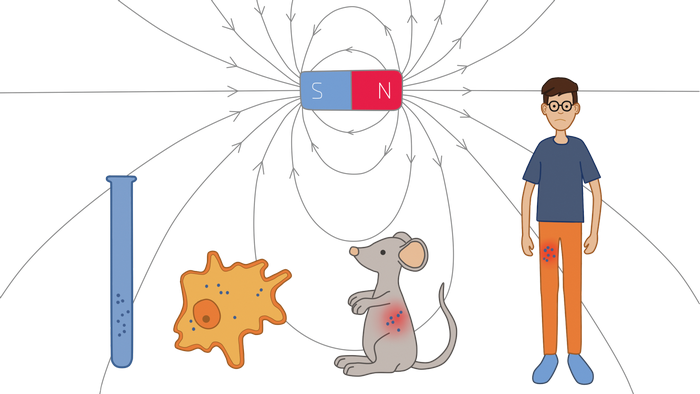
A symposium bioMETANANO is devoted to the recent progress of biomedical research in the area of imaging and nanotechnologies. The symposium welcomes researchers from several fast evolving fields related to (bio)medicine, such as magnetic resonance imaging and beyond, drug delivery, advanced contrast agents, synthesis of biocompatible platforms for imaging and sensing. Multifunctional nanomaterials are promising platforms for the targeted drug delivery: the future "hope" of medicine. Magnetic resonance imaging is a minimally invasive, safe and capable to visualize anatomy, functionality and chemical content in vivo. This makes it an effective tool to observe biodistribution of the nanomaterials for thera- and diagnostics. The reports on the most innovative developments in the areas of magnetic resonance imaging and bionanotechnology will be highlighted in this symposium.
QuantuMetanano
Organizers: Stephan Reitzenstein &
Alexey Akimov &
Elizaveta Semenova &
Dmitry Zuev
Secretary of the QuantuMetanano: Vitaly Yaroshenko
Photonic quantum technology is an exciting and emerging field which is predominantly based on the unique properties provided by quantum mechanics, superposition and entanglement. Compared to respective classical approaches, quantum technologies not only have the potential to considerably enhance computational power, communication security, but also can be applied in interdisciplinary research including bio-marking, sensing, thermometry, etc.
The Symposium provides a platform for discussion of recent progress in development, experimental realization, application of single photon sources and creation of collaboration for scientist from all over the world. As well symposium covers theoretical and experimental research in the following and related topics such as:
- advances in nanofabrication and circuit integration
- diamond nanophotonics
- new materials and concepts for quantum photonics
- control of quantum emitters and lifetime engineering
- quantum nonlinear phenomena
- quantum nanophotonics for biology applications
- quantum photonic devices for simulations, sensing, and communication
- quantum communications, networks and metrology
- novel quantum technologies
Special Sessions
To enhance the impact of the METANANO conference series, researchers within the scope of the conference are invited to suggest Special Sessions.
Proposals should be completed by using this template.
Please submit your proposal to the TPC Chair Prof. Mikhail Limonov
(CC to the Conference Secretary Ms. Anastasia Kaptsova) no later than 16 December 2018.
Each proposal should include the following information:
1. Title of the special session
2. Brief description of the topic
3. Explanation of the relevance of the topic as a Special session
4. Full name, position and affiliation of the Special session's organizers
5. List of proposed speakers
All proposals will be reviewed by the Technical Program Committee (TPC).
The TPC will score and rank submitted proposals based on scientific quality, timeliness, and interest from the conference community.
The session organizers will have an authority for accepting papers for their session which will not be a subject to a regular review cycle.
It is expected that there will be one to three slots of 110 minutes in duration.
Each slot can accommodate three to six 15 (oral) - 20 (invited) - 30 (keynote) minute talks.
Special Sessions will be scheduled at different slots over the conference period.
Proposers will be informed about the TPC decision one week after proposal's submission.
1. Advanced Optical and Optoelectronic Materials
Organizers: Anvar Zakhidov & Sergey Makarov
Advanced Optical and Optoelectronic Materials play a vital role in our lives because of its uniqueness in properties and extended application in various industries. These are the basis of modern science and technology. Indeed, they are at the heart of many technological developments that touch our lives and find applications such as electronic materials for communication and information technology, biomaterials for better health care, sensors for intelligent environment, energy materials for renewable energy and environment, light alloys for better transportation, materials for strategic applications and more. This Special Session aims to provide a platform for discussions between specialists in halide perovskites, carbon nanomaterials, quantum dots, and nanowires, which are developing new optoelectronic devices or novel photonic designs.
2. Optomechanics and Optical Manipulation
Organizers: Pavel Zemanek & Alexander Shalin & Mihail Petrov
2018 year Nobel Prize awarded in part to prof.
Arthur Ashkin confirmed the great importance of optical forces for a modern research.
The ability to manipulate small objects with focused laser beams has opened a venue for investigating dynamical phenomena relevant to both fundamental and
applied science. Artificial optically bound structures, cooling atoms, "tractor beams", single cells and viruses manipulation - are among the highly demanded applications of optical forces.
In this section, we are aimed to gather front-line high-level results on nano- and microparticles manipulation and transport.
3. Anapole and Toroidal NanoPhotonics
Organizers: Andrey Miroshnichenko & Andrey Evlyukhin & Alexander Shalin
All-dielectric nanophotonics is a rapidly developing area of research due to the possibility to control and manipulate light scattering by high-index semiconductor nanoparticles. Mature fabrication techniques, developed for silicon technologies, enable realization of ambitious proposals that continue promoting the field. It opens a vast room of opportunities for designing novel types of nanoscale elements and devices, and paves a way to advanced technologies of light energy manipulation. In particular, progress in all-dielectric metasurfaces and nanoantennas promises replacing conventional bulky optical elements with nanometer-scale structures.
One of the exciting and promising prospects is associated with the utilizing new types of excitation, such as magnetic and toroidal modes, associated anapole states, ultrahigh-Q resonant modes, which can boost and enhance both linear and nonlinear responses. Therefore, this section is to bring together the up-to-date research on this topic from all over the world.
4. NanoPhoNonics and Acoustic Metamaterials
Organizers: Samuel Raetz & Andrey Akimov
The Session on NanoPhoNonics and Acoustic Metamaterials is aiming to bring together the researchers who are involved in the studies of vibrations in nanostructures including nanoparticles, biological nanoobjects (e.g. single cells), two-dimensional layers (e.g. graphene), and complex electronic and optical nanodevices, as well as those involved in the studies of elastic/acoustic waves in metamaterials including hot-topics such as bio-inspired metamaterials, acoustic energy harvesting, tunable acoustic perfect absorbers, acoustic diode, and slow sound. The main goals of the session are to promote the recent breakthrough and hot-topics between these two communities and, more broadly, to share them with the Photonics and Plasmonics community as electromagnetic and acoustic/elastic waves are part of the same research field of wave physics. Inspiring new ideas fed by this gathering would be a great success for the session. The specific fields presented in the proposed session include: coherent phonons and picosecond acoustics; nanomechanics and optomechanics; quantum phononics and interaction of phonons with photons; magneto-acoustics; phononic crystals; acoustic perfect absorption or transmission; nonreciprocal acoustic transmission; metasurfaces; bio-inspired metamaterials; etc. The session will include two slots, one keynote lecture and 5 invited talks. The topics of the Session could be also interesting for the researchers working in the field of nanophotonics, nanoengineering, microwave metamaterials, plasmonics, and medical applications.
5. Superconducting and Quantum Metamaterials
Organizers: Giorgos Tsironis & Alexey Ustinov
Over the past few years, tremendous progress has been made with manipulation of mesoscopic-scale quantum coherent objects, particularly superconducting qubits. These meta-atoms can be prepared in a specific quantum state, precisely manipulated with microwave signals, and their quantum evolution can be quantified through quantum state tomography. Single microwave photons can controllably interact with these quantum objects. Individual photons can be detected, and the quantum statistical properties of the light can be thoroughly characterized. Measurements of such individual meta-atoms have demonstrated many of the properties observed with natural atoms, including e.g. electromagnetically-induced transparency, facilitated by their enormous dipole moments and coupling strengths, as compared to natura
Proposers will be informed about the TPC decision one week after proposal's submission.
